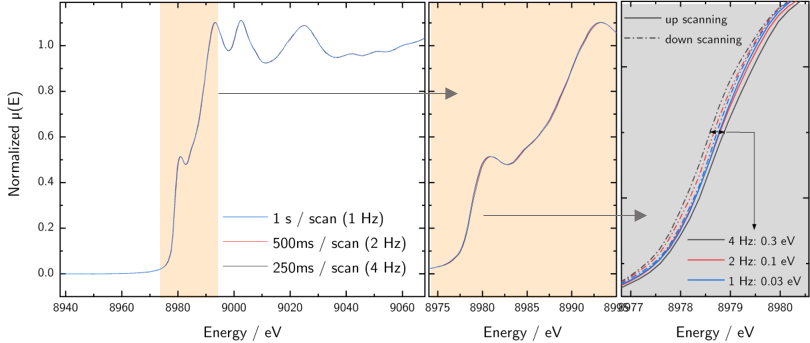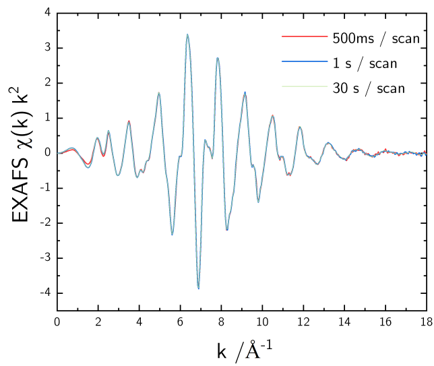X-ray Absorption Spectra in transmission
Cu foil
2019-01-31, step scanning (35 min/scan), 2 repeats, Si111 crystals, room temperature
Balder (green) compared to other beamlines (blue/orange)
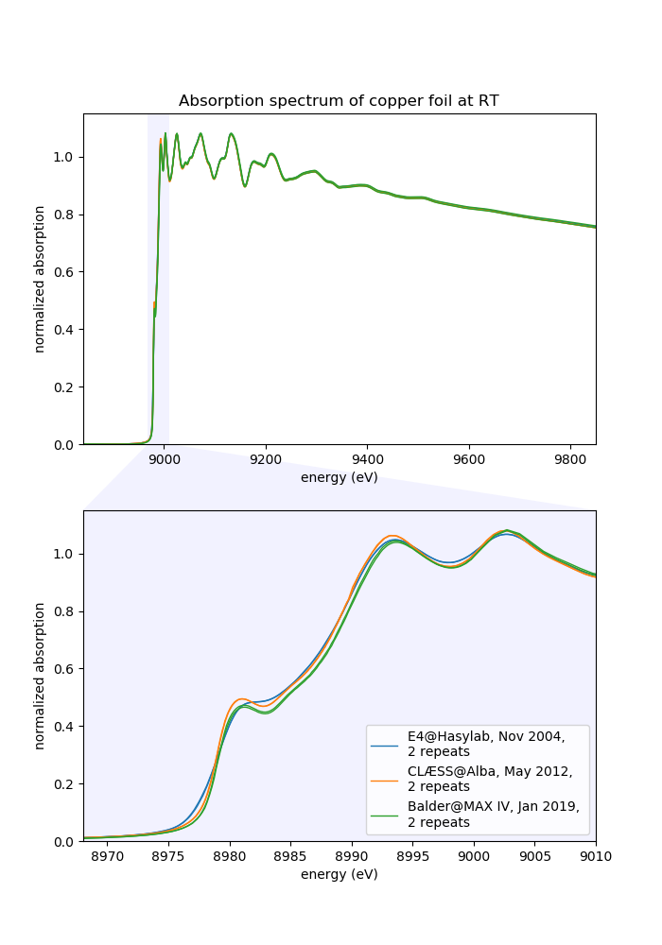
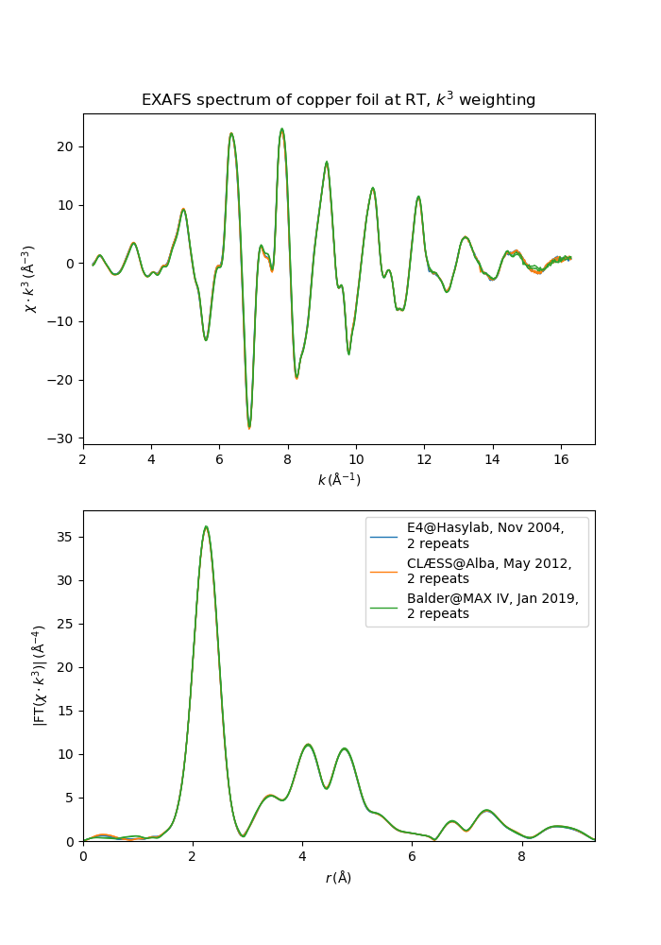
2019-02-08, fly scanning (1 min 24 sec/full EXAFS scan), 35 repeats (not averaged)
Fly scan (orange) compared to step scan (blue). We are currently working on fine-tuning the fly scan performance. Presently, we can scan with a total accumulation time down to ~30 sec per full EXAFS. Notice a slight decrease in the 1st FT peak height. This is a result of ‘’running average” – a convolution of the real spectra with a rectangular broadening function given by the integration time duration (presently down to 1 ms). The user will eventually have control of this broadening at the expense of total scan time and S/N ratio.
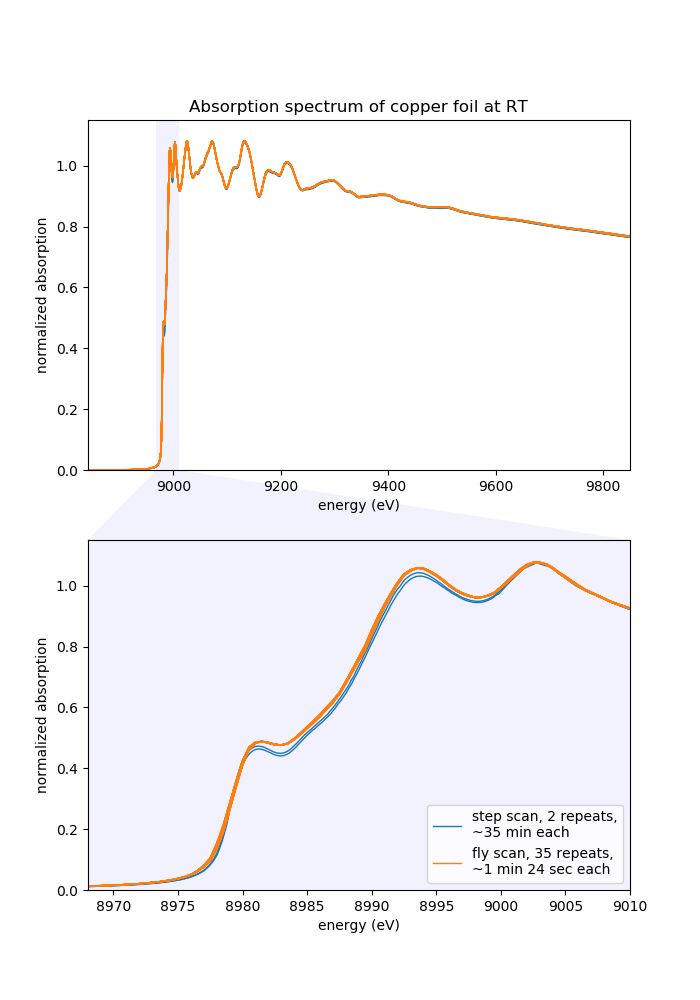
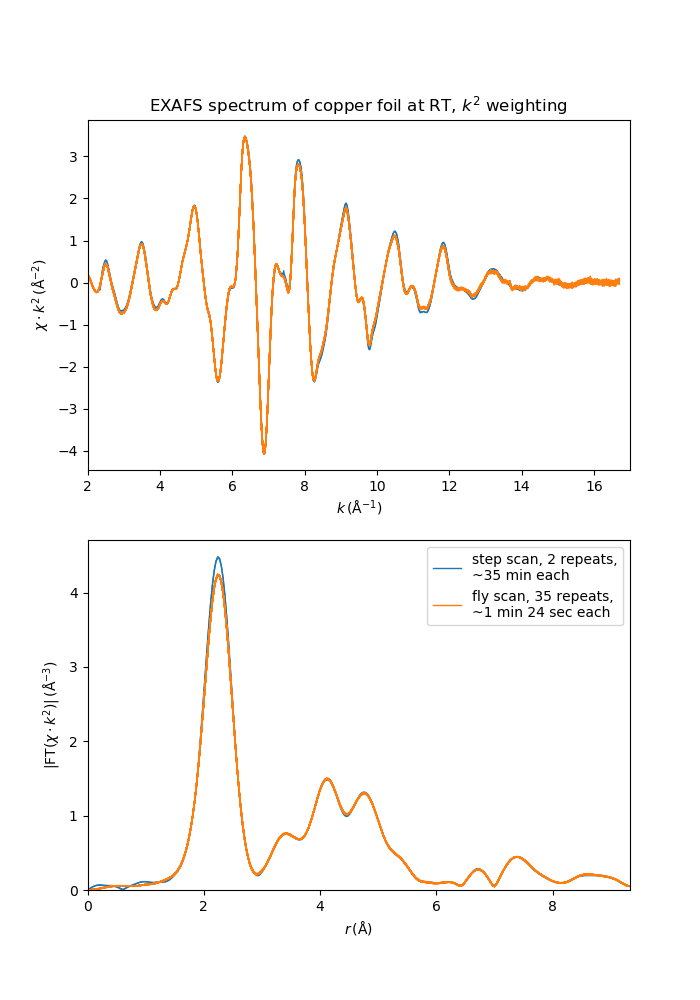
Copper oxide
2019-03-06, fly scanning (1 min 24 sec/full EXAFS scan) on CuO pressed 13 mm pellet (2 absorption length), focused beam (~6 x 1012 photons/sec) 30 scans on fixed spot, average of 1-15 (orange) and 16-30 (blue).
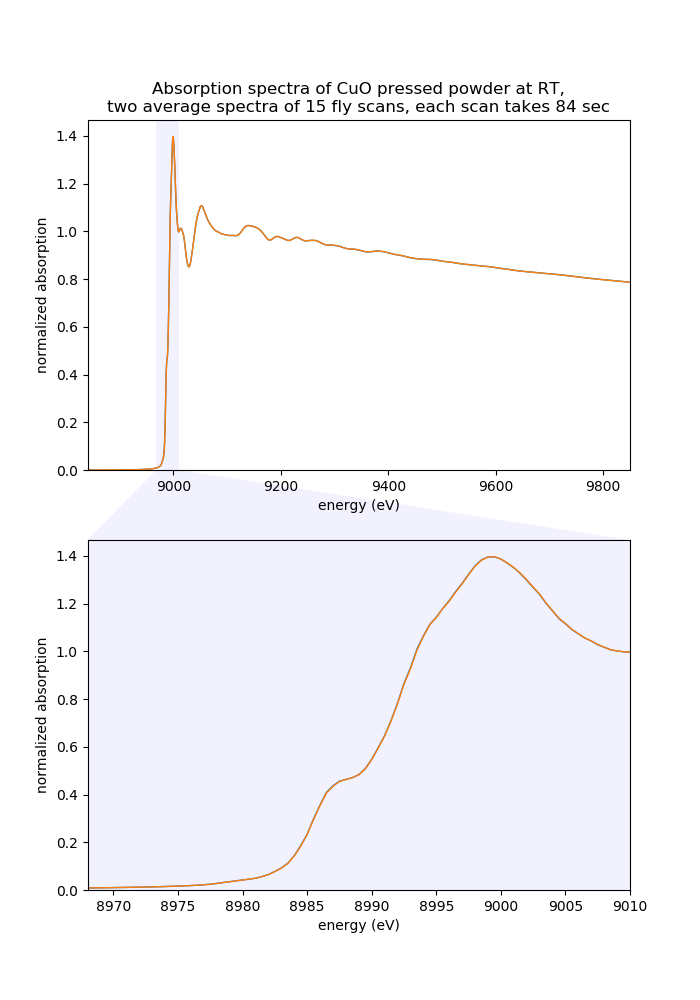
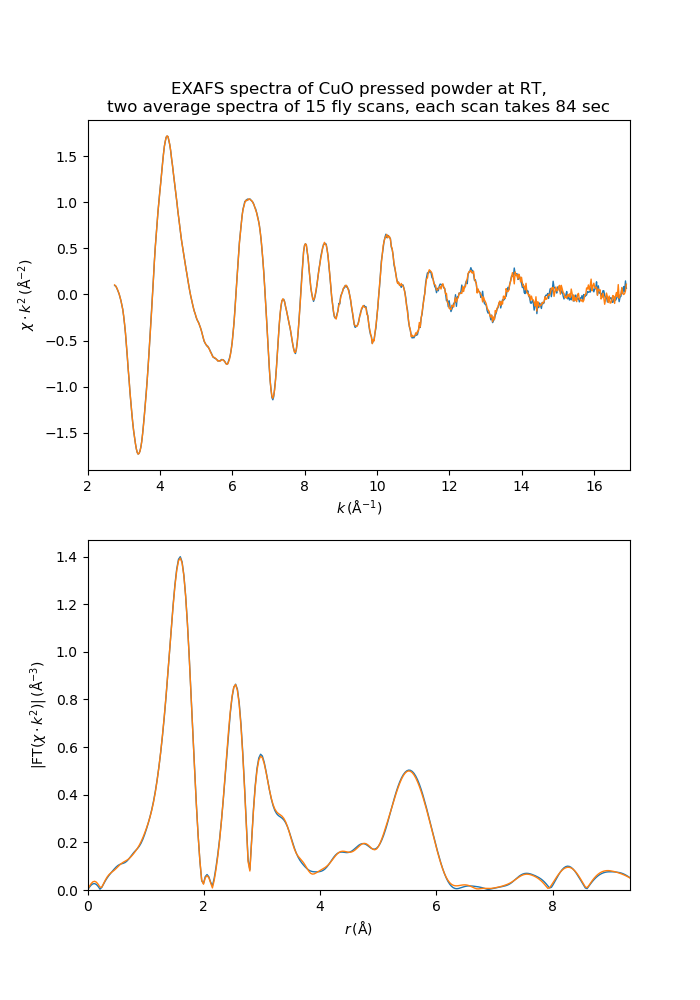
Copper (II) sulfate in solution
2019-03-08, fly scanning (1 min 24 sec/full EXAFS scan) on 0.1 M CuSO4 (aq) in liquid cell with 1.5 mm path length, focused (100 µm2) versus defocused (h x v, 0.1 x 2 mm2) beam with a small step displacement before each new scan, average of 11 scans defocused (orange) and focused (blue).
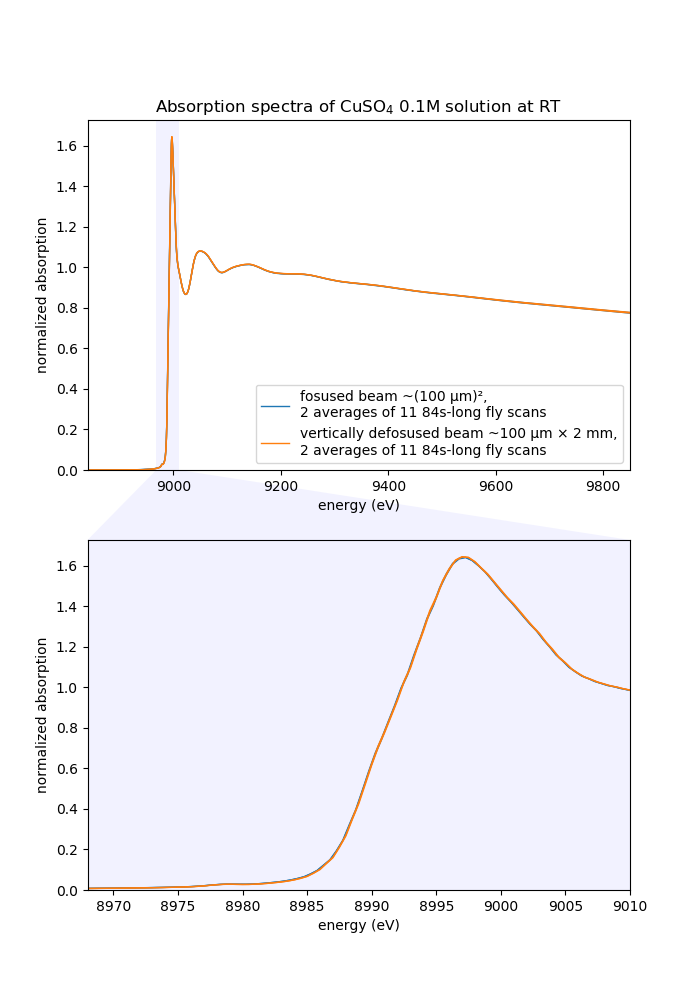
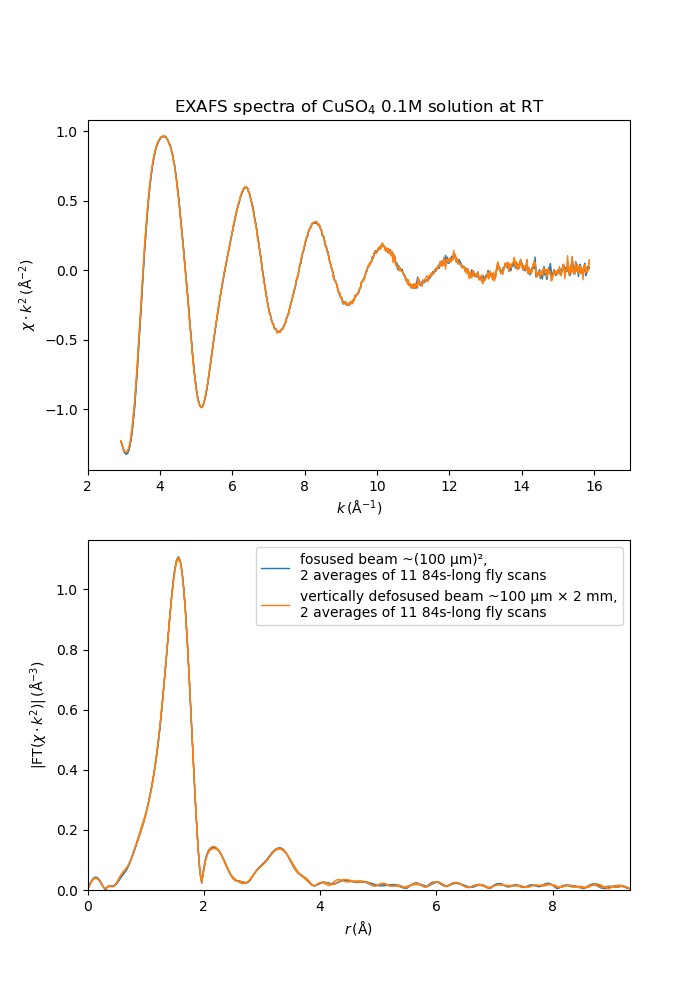
Quick scanning EXAFS
under development, tested down to 4 Hz, results from commissioning fall 2022
Cu foil
